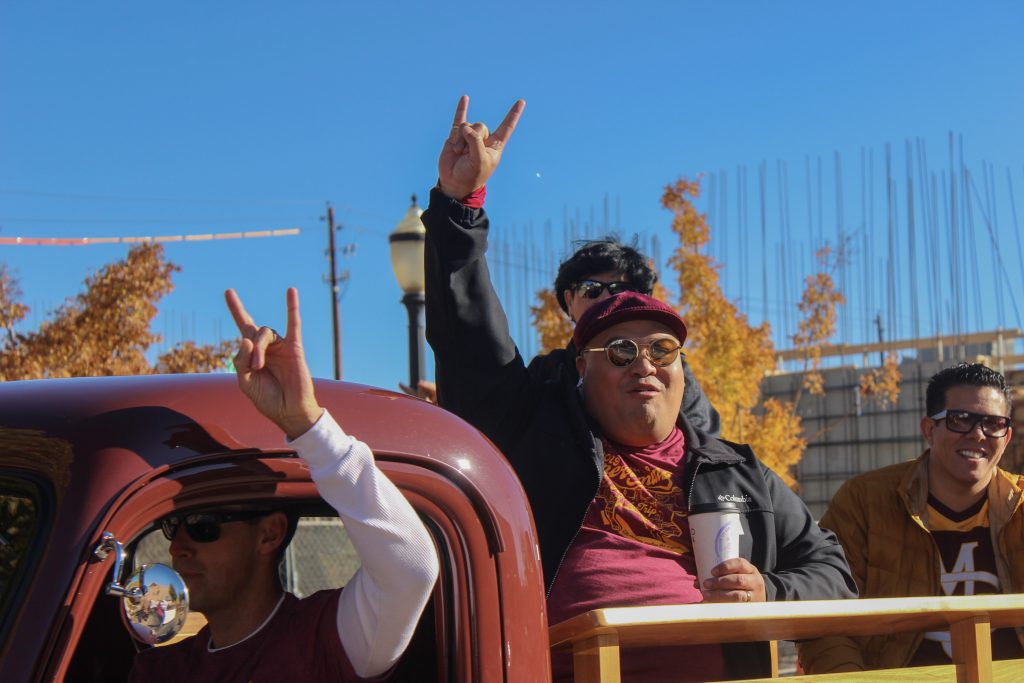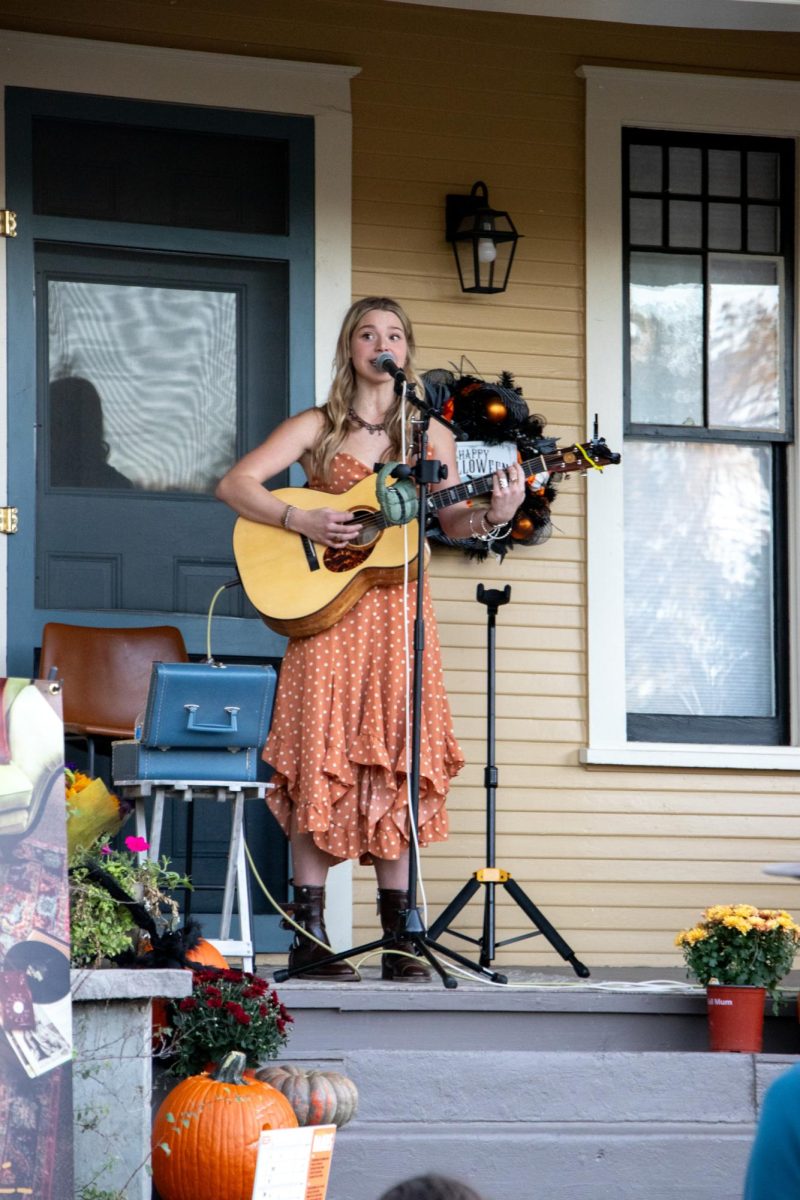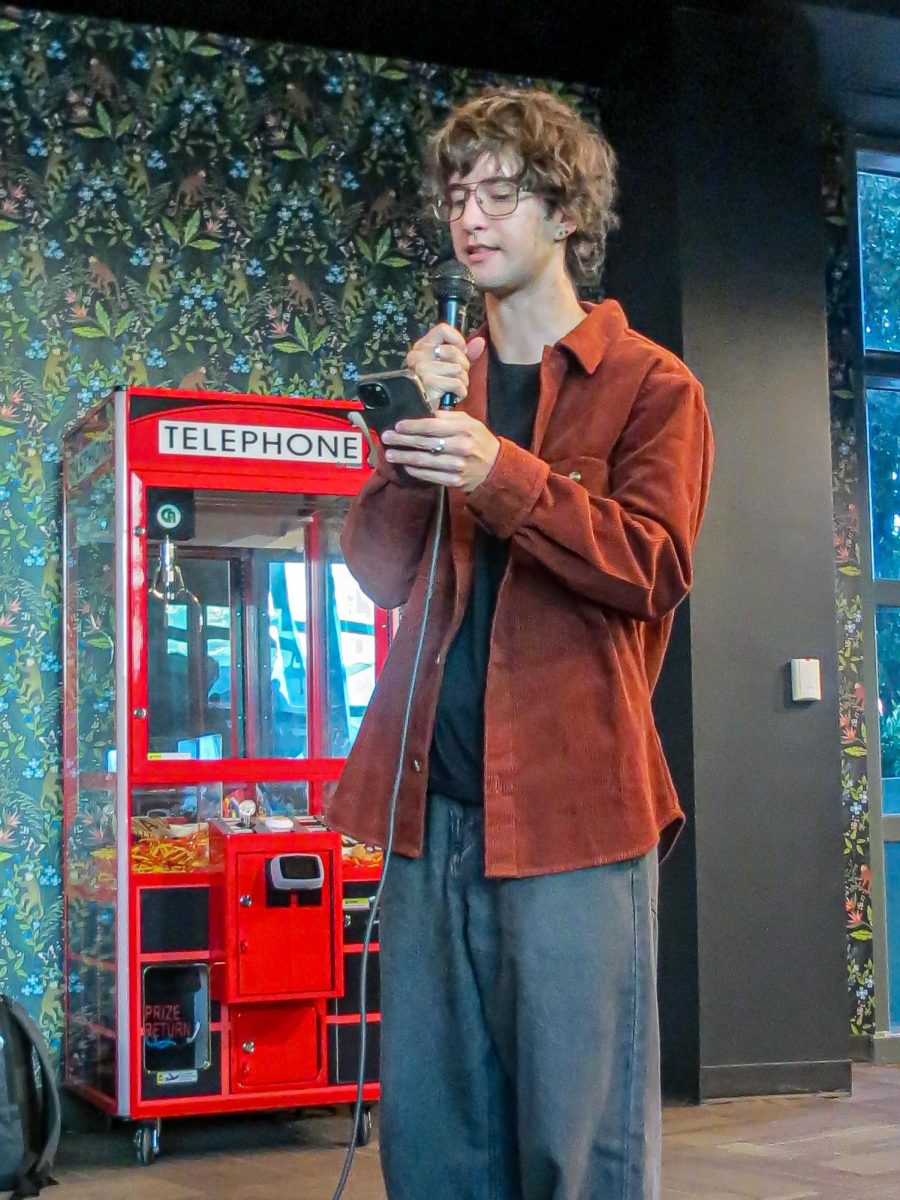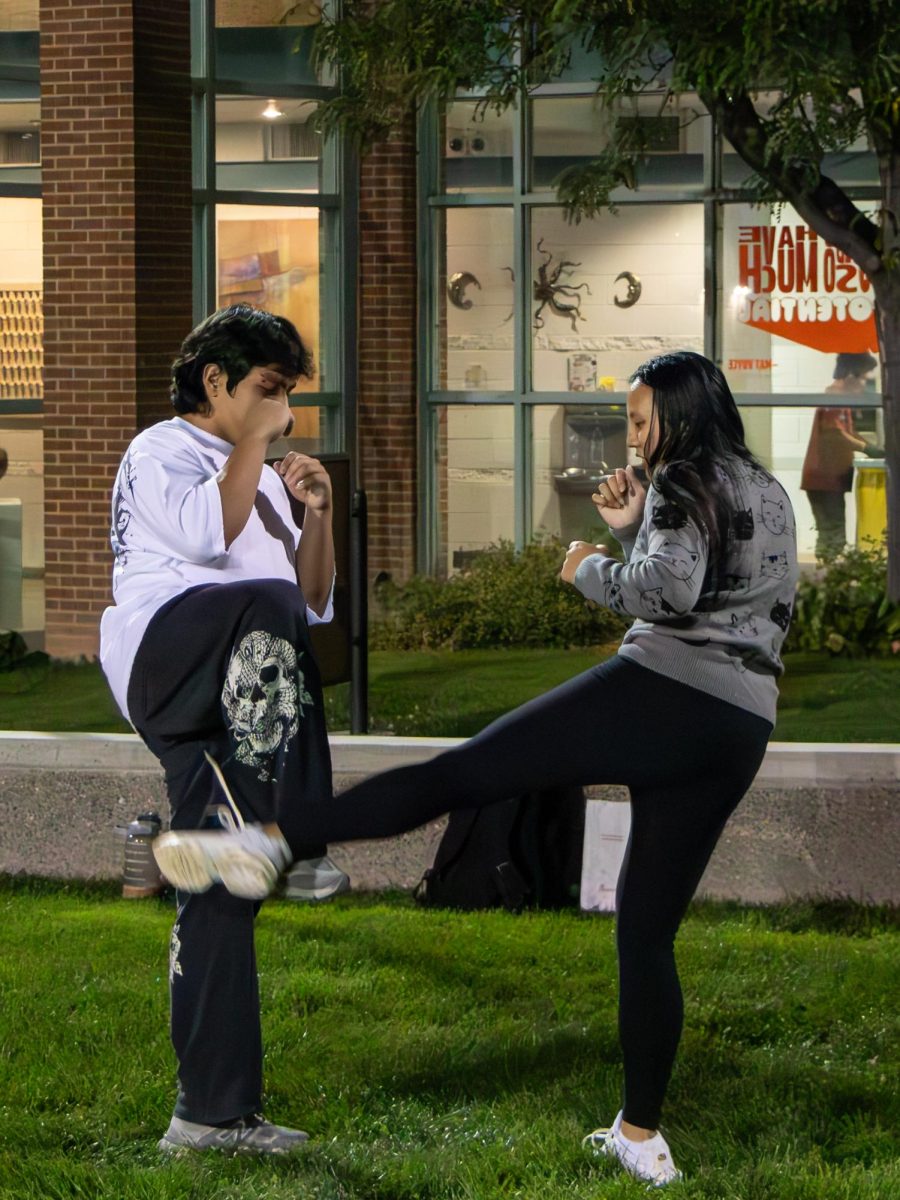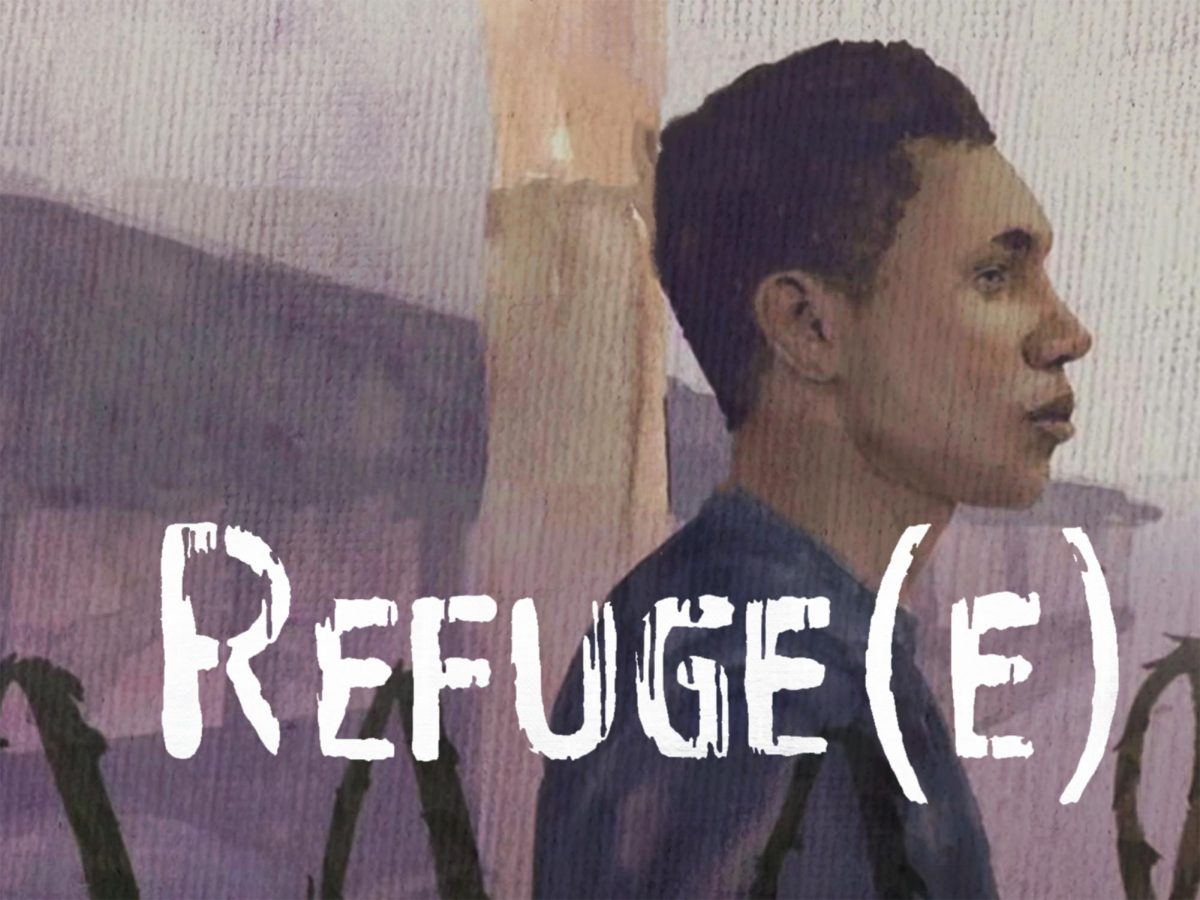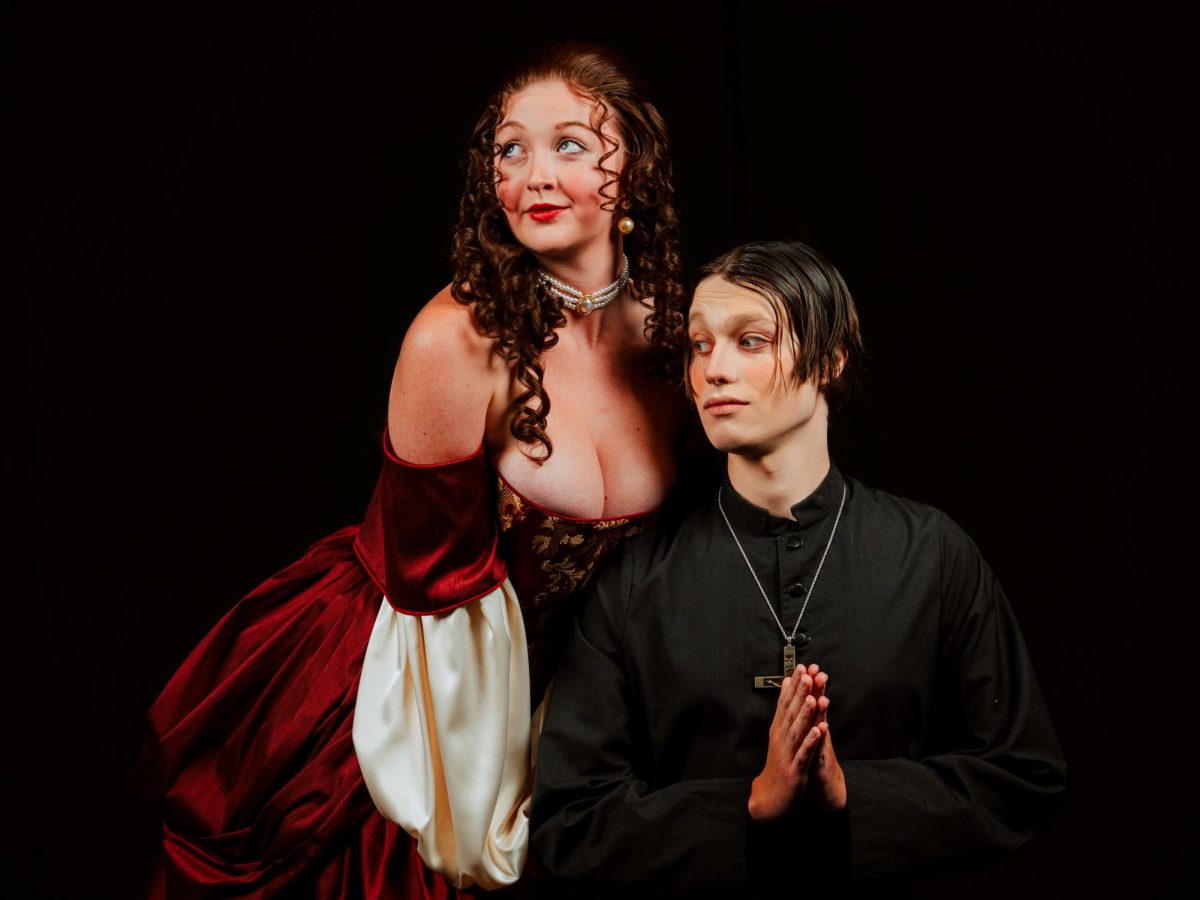“People ask me, ‘How did you get here?’ I joke around and say I put a grass skirt on, and paddled my way through the Pacific Ocean.”
Kalani Pe’a, two-time Grammy winning musician and Colorado Mesa University (CMU) alumni, laughs when asked about stereotypes he sees the Hawaiian culture deal with. “No, I flew on Hawaiian Airlines. I flew on a plane in Louis Vuitton, […] Prada glasses and a cabbie cap because I’m a modern Hawaiian, and I have a mortgage to pay.”

Pe’a, who performed at CMU on Nov. 21, oozes the Hawaiian culture. A member of the over 20,000 fluent speakers of “Ōlelo Hawaiʻi” (the Hawaiian language), he grew up in a Hawaiian language immersion program, graduating from the Hawaiian Language School Nāwahīokalaniʻōpuʻu in 2001.
“I’m overwhelmingly grateful [to return to CMU]. When I walk on campus, I have this outpouring of love for the campus, because I spent five years [here]. I partied my freshman year [in 2001], so it took me five years to get my bachelors degree.” He laughs again.
“I spent the best times of my life here, learning how to be independent, learning how to wash my clothes […] To come back and see Robinson Theatre, where I performed Tony-award winning shows, sang with chamber choirs, [and] get to see my professors, was heartwarming for me, because I’m a proud CMU graduate.”
Pe’a was the president of the Ho’olokahi Polynesian Alliance, during his time then known as the Ho’olokahi Polynesian Club, as well as the director of the Cultural Inclusion Council, then known as the Cultural Diversity Board.
He gushes over many of the artists nominated for the Grammy Award for Song of the Year, the nominees of which were released a few days ago.
“Lady Gaga, Billie Eilish, Tanya Tucker, H.E.R, Taylor Swift [Lana del Ray, Lewis Capaldi, Lizzo], I love them all. Lady Gaga is a phenomenal writer, I love her intention, I love the way she writes, her lyrics […] the melody that goes with her lyrics is spectacular. I like Lizzo too. [As a musician], she’s different,” Pe’a says.
“I’m just upset that the song from Beyonce’s not there, because I’m a big fan. Been to her concerts, also met her in person, like shook her hand, and never let go.”
He speaks about the music industry, and what it means to be a musician. Pe’a taught a few music workshops during his visit to CMU. “I said to the students, ‘if you want to be successful in the music industry as an independent artist, whether you win Grammy [awards] or not, [you need to answer the question], what makes you different from the rest?’
“I like how all of us are different. We are our own skin and we know our own identity. What makes you different from the rest is a good question when it comes to being a musician […] Lady Gaga is different from Lizzo, Lizzo is different from Lil Nas [X], Lil Nas [X] is different from Beyoncé, Beyoncé is different from me as a Hawaiian musician, coming from a smaller community.”
Pe’a grows more serious talking about the Hawaiian language and its history.
“Our Hawaiian language has been around for thousands and thousands of years. It is said that our ancestors migrated from Tahiti, and the second wave came from the Marquesas islands. I’m a descendant of the people of Hawaii. My great-great-great-great-great-great-great grandparents all come from Hawaii, I breathe Hawaii, I was born and raised in Hawaii.”
Hawaiian as a language declined as a language during the nineteenth century, after the Hawaiian monarchy was overthrown by the western-backed Committee of Safety and United States involvement. The population also dropped due to disease and various other ailments. Forbidden to speak their native language, some Hawaiian students were punished in the early twentieth century for attempting to speak it.
“What do we do? How do we thrive as people?” Pe’a asks. “We open up Hawaiian immersion programs.”
Legislature for the Territory of Hawaii commissioned the creation of a Hawaiian dictionary in 1949, and the first public Hawaiian language immersion schools were launched in 1984. These both led to an increase in those fluent in the language, though Ōlelo Hawaiʻi would never return to the fluency levels once held.
“Statistics show that there are nearly 500,000 people with Hawaiian blood [now],” Pe’a says. “There’s 500,000 of us that need to stick together. I speak the language of my forefathers, I speak the language of my ancestors.”
Pe’a now strives to be a modern Hawaiian, and wears the culture with pride.
“[I’ve been asked], ‘Do you live in a grass hut? Do you live in a tipi?’ No, I live in a normal home, I have AC in my bedroom, I pay for my mortgage. I don’t have grass huts, that was probably in the late 1800s. Those are stereotypes, and you break them with education. That’s what we do, right? You paint that canvas. No grass huts, you paint [us] with a big mansion. I get questions like that! ‘How did you get here?’”
Pe’a also reminisces about his time at CMU as a student, in particular a nickname he received from some of his friends.
“Some of my friends would call me pineapple.” Pe’a seems to be over that nickname, and his voice trails a bit. “However, a pineapple is not a native plant of Hawaii, it’s an invasive plant. I’ll tell that to my friends and they’ll make a joke about that, and they’ll still call me pineapple, because I came from Hawaii. And by the way, I don’t like pineapples on pizza anyway.
“They were like, ‘Oh, you’re just like this tender pineapple with lots of love and sweetness inside,’ and I’m like, that’s kind of gross but kind of cool. That was fun, good old days with friends, who had nicknames for me. I had nicknames for them, but I won’t elaborate.”
Pe’a’s latest achievement is his involvement in a compilation album by Haku Collective, a production agency based in Honolulu. He contributed a song, titled “Ōpae Ē.” The compilation album, titled “Hawaiian Lullaby,” received a 2020 Grammy Nomination for Best Regional Roots Music Album.



